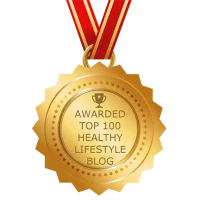Home » A Guide to High Cholesterol
Cholesterol 101
Looking top expert high cholesterol treatment specialist in Burbank LA? Explore innovative treatment options. Call Dr. Cynthia’s Cholesterol 101 guide for more information. High cholesterol treatment is a common but serious concern for Americans, especially middle-aged and elderly Americans. Over 73 million adult Americans (more than 30 percent of the population) have high cholesterol, and of these, less than one in three has the situation under control. Globally, 2.6 million deaths are attributed to raised cholesterol, as well as a third of ischaemic heart disease. The Holistic Healing Heart Center’s mission is to protect the health, particularly the cardiovascular health, high cholesterol physical symptoms, of its patients and the wider community. That is why we seek to educate people about the problems cholesterol can cause and what you, as an individual, can do to prevent or minimize this problem in your own life.
What You Need to Know About High Cholesterol
Cholesterol is a waxy, fat-like substance produced by your liver, as well as being present in animal fats. It is classified as a lipid, and performs several important functions in the human body. That said, practically nobody requires dietary cholesterol: the body is good enough at producing a suitable amount itself. Broadly, cholesterol is divided into two categories, ‘good cholesterol’ and ‘bad cholesterol’.
- Good cholesterol (also known as high-density lipoprotein, or HDL) helps remove bad cholesterol from your body by returning it to the liver. In healthy amounts, HDL cholesterol can reduce the risk of heart disease or strokes. It can also cut down on the chance of blood clots.
- Bad cholesterol (generally referred to as low-density lipoprotein, or LDL) carries cholesterol through the body so that it can perform its necessary roles. However, in higher concentrations, it can stick to the walls of your arteries, important blood vessels that carry gallons of blood around your body every hour. This cholesterol plaque, as it is called, is one of the risk factors for heart disease, as it limits blood flow. Build-up of bad cholesterol is sometimes called atherosclerosis. If these plaques rupture or tear, they can cause blood clots, either blocking the flow of blood at the site or plugging an artery somewhere further in the bloodstream. Depending on where it occurs, a blockage in blood flow can cause a heart attack or stroke.
High Cholesterol Symptoms and Causes
It’s important to lead a healthy lifestyle in order to limit your exposure to bad cholesterol and to keep levels of both types of cholesterol within healthy bounds. Sadly, there are many factors in the standard American lifestyle which contribute to high cholesterol levels.
- Eating high cholesterol foods, such as red meat, lard, shortening, full and reduced fat dairy, and saturated vegetable oils (e.g. coconut and palm oil). Trans fats (sometimes called ‘partially hydrogenated oils’ on food packaging) can also contribute negatively to cholesterol levels, raising the levels of LDL while lowering the level of HDL. They are often found in commercially-sold baked goods like frozen pizza, cakes, biscuits, cookies, crackers, and especially fried snacks like donuts.
- Inactivity is also a problem that can contribute to higher levels of cholesterol. High cholesterol physical symptoms activity is one of the ways that the body is spurred to create more HDL to manage LDL levels. If you aren’t performing half an hour of exercise at least five times a week, you aren’t giving your body a fighting chance.
- Smoking is, unsurprisingly, another risk factor which compounds the problem of high cholesterol. The chemicals in tobacco smoke, when they enter the bloodstream through the lungs, cause damage to the arteries which make them much more vulnerable to cholesterol plaque. What’s worse, smoking reduces the amount of HDL in the body. It is a multiplier for the risk of heart disease. In fact, for someone with a family history of heart disease and a high cholesterol level, smoking can increase the risk of heart disease by a factor of ten.
- Obesity also has an effect on cholesterol levels. It increases the amount of LDL produced, and impacts your body’s ability to scrub it from the bloodstream. There are 78 million obese American adults, needs cholesterol disease treatment, blood cholesterol treatment. If you are one of them, you may find that standard measures to reduce cholesterol do not work as well on the obese as on less overweight people. This is due to a variety of factors.
- First, obese people’s bodies cannot easily adjust their LDL production based on the fats they consume. In people with lower body fat, the body can regulate this to an extent.
- Frequently, obesity leads to bodily inflammation. Your body’s ability to regulate its response to dietary fat intake is further impeded by inflammation.
- Obesity can also cause insulin resistance. An obese body can have difficulty handling cholesterol normally because the enzymes that typically control it are less responsive.
- Aside from lifestyle, there are other possibilities that put an individual at risk when it comes to cholesterol. Genetic factors, such as the ability to process cholesterol and fat efficiently, can have an impact. Broadly speaking, if both your parents suffered from high levels of LDL cholesterol, you are also likely to develop such a complaint.
- In particular, there is a rare inherited condition known as familial hypercholesterolemia, which causes high hypercholesterolemia cholesterol levels of total cholesterol and LDL in particular. It generally affects 0.2% of the population. The best way of detecting this condition is through a blood test.
Statins and Their Effects
A common treatment for high levels of cholesterol is statins. These drugs block the capability of the liver to produce cholesterol. This lowers LDL and total cholesterol levels, while lowering triglyceride levels and raising HDL levels. They are also thought to stabilize cholesterol plaques in arteries, reducing the likelihood of heart attacks. Statins are considered a standard prescription for those suffering from high levels of cholesterol. However, they are not free from side effects. They commonly cause:
- Headaches
- Flushing of the skin
- Drowsiness
- Dizziness
- Difficulty sleeping
- Bloating and/or gas
- Constipation
- Diarrhea
- Rash
- Nausea and/or vomiting
- Abdominal pain and cramping
- Myalgia (muscle pain and tenderness)
More severe side effects include:
- Myositis: muscle injury is more common while on statins and other cholesterol medication. Inflammation of the muscles can easily occur.
- Rhabdomyolysis: this condition of extreme muscle inflammation and damage causes muscles all over the body to become painful and weak, which in turn releases proteins into the blood that gather in the kidneys. This can damage the kidneys, leading to kidney failure and even death. This affects 1 in 10,000 people who use statins, or about 1,700 Americans.
If you are concerned about your cholesterol, we invite you to schedule a consultation with Dr. Cynthia Thaik.



